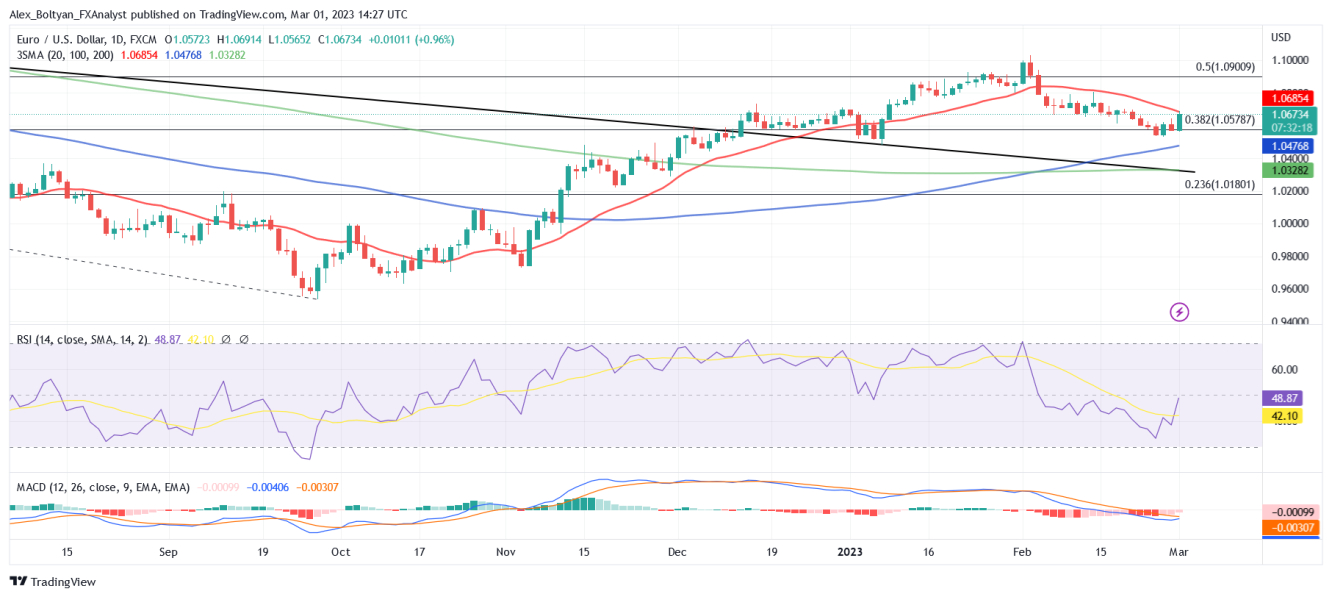The EUR/USD pair was boosted on Wednesday and advanced to fresh weekly highs following the release of higher-than-expected German inflation data. The pair's advance has also been underpinned by the rise in the German 10-year Bund yield, which reached the highest level in 12 years at 2.724%.
At the time of writing, the EUR/USD pair is trading at the 1.0670 zone, recording a 0.94% daily gain, having printed a one-week high of 1.0691.
Data released on Wednesday showed that the annual rate of inflation, measured by the Harmonised Index of Consumer Prices (HICP), rose to 9.3% in February from 9.2% in January, surpassing the market's consensus of 9%.
The euro has strengthened amid expectations the European Central Bank (ECB) will continue tightening its monetary policy and raising interest rates longer than previously estimated.
Recent inflation reports from Spain, France, and Germany support that case. Furthermore, Bank of France Governor Francois Villeroy de Galhau said on Wednesday it is desirable reaching the terminal rate by September at the latest.
Investors are betting on a 50 bps hike by the ECB in March, while the terminal deposit facility rate is forecasted at 4% from 3.5% previously (currently at 2.5%).
From a technical perspective, the EUR/USD maintains a slightly bearish short-term bias, although indicators on the daily chart are improving, hinting at a steeper upwards correction.
The pair is facing immediate resistance at the 20-day SMA at around 1.0690, and if broken, could pave the way to the next bullish target at the 1.0760 zone.
On the other hand, the loss of the weekly lows at 1.0535 would worsen the short-term setup risking a retest of the 1.0500 psychological level and the 100-day SMA at 1.0473.


